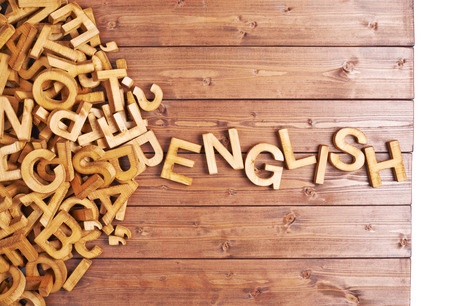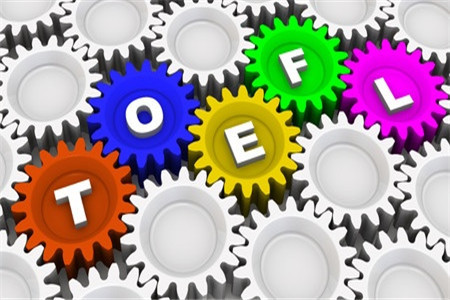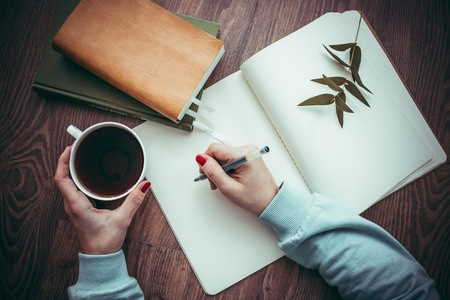【小站原创】官方真题Official50托福听力Lecture1文本+真题+答案解析
- 2018年04月11日13:30 来源:小站整理
- 参与(0) 阅读(256228)
现在大家在进行托福备考时官方真题Official托福模考软件相信是大家用的最多的工具了,对于托福成绩的提升是非常有帮助的。托福听力可以说是整个托福考试当中比较重要的一个部分,如何利用现有资料官方真题Official模考软件来提升大家的托福成绩呢?今天小编在这里整理了官方真题Official50托福听力Lecture1文本+题目+答案解析来分享给大家,希望对大家托福听力备考有帮助。
官方真题Official50托福模考软件配套资料汇总→→→点击进入
官方真题Official50托福听力Lecture1原文文本
Ancient Egyptian Glass
Listen to part of a lecture in an ancient history class.
Professor:
Ok, last time we were discussing trade and commerce during the Bronze Age.
And I said a little over three thousand years ago, there was quite a lively trade among the countries along the Mediterranean Sea.
People are making objects out of bronzes and they were using bronze tools to make other goods.
And they develop trade networks to trade these goods with other countries around the Mediterranean.
One of the things they traded was glass.
And recently there was an archeological excavation in Egypt, on the Nile River around where enters the Mediterranean Sea where they discovered an ancient glass factory.
Robert?
Robert:
I thought our textbook said the Egyptians import their glass from other countries.
Professor:
Well, until now that’s what the evidence seemed to suggest.
I mean, we have some evidence that suggests that the Egyptians were making glass objects, but not glass.
Robert:
Ok. Am……Am I missing something?
They are making glass but they are not making glass?
Professor:
I said they were making glass objects, right?
You see, it was previously thought that they weren’t actually making the raw glass itself that they were importing unfinished glass from the Mesopotamia, which today is a region consisting of Iraq and parts of Syria and Turkey and Iran, and simply reworking it.
Most archeologists believed that the glass factories were in Mesopotamia because that’s where the oldest known glass remains come from.
You see, there was two stages of glass making.
The premiere production stage where they made disks of raw glass.
And there was the secondary stage where they melted the raw glass, the glass disks, and created decorative objects, so, or whatever.
And from these new Egyptians’ site, we learned that the primary production stage have several steps.
First they took quartz, a colorless transparent mineral and crush it.
Then they took that crushed quartz and mix it with plant ash.
A plant ash is just what it sounds like, the ashes left after you burnt plant material.
They slowly heat this mixture at a relatively low temperature in small vessels, containers like jars made out of clay.
And that yielded a kind of glassy material.
They took this glassy material and grounded it up into a powder and then they used metallic dye to color it.
After that, they poured the colored powder out into disk-shaped molds and heated it up to very high temperatures.
So that it melted.
After cooled, they break the molds, and inside there were the glass disks.
These disks were shipped out to other sites within Egypt and places around the Mediterranean.
Then in the secondary phase, the disks were reheated, and shaped into decorative objects.
Susan?
Susan:
So what kind of objects were people making back then?
Professor:
Well, the most common objects we found, mostly in Egypt and Mesopotamia, the most common objects were beads.
One thing the Egyptian were very very good at was imitating precious stones.
They created some beads that look so much like emeralds and pearls that was very difficult to distinguish them from the real thing.
Em, and……and also beautiful vessels, ah, with narrow necks.
They were probably really valuable so they wouldn’t have been used to hold cooking oil or common food items.
They were most likely used for expensive liquids, like perfume.
Now the glass made at this factory was mostly red, to get this red color they used copper, in a sophisticated process.
Of course, any kind of glass was very valuable so these red bottles would only owned by wealthy people.
In fact, because it was so difficult to make, and sort of mysterious and complicated, it was probably a product produced for the royal family.
And they probably used glass to show their power.
Also, beautiful expensive objects made great gifts if you are looking to establish or strength the political alliances.
And it is quite possible that the ancient Egyptians were actually exporting glass, not just making it or importing it.
The trade with Mesopotamia was probably a friendly mutual trade because a Mesopotamia glass was usually white or yellow.
So Mesopotamians might accept something like, we will give you two white disks for two red disks.
There is no proof of that, at least not yet.
官方真题Official10托福听力Lecture1答案解析
6. 主旨题
答案:A
解析:
此题出处是:
Professor:
And they develop trade networks to trade these goods with other countries around the Mediterranean.
One of the things they traded was glass.
And recently there was an archeological excavation in Egypt, on the Nile River around where enters the Mediterranean Sea where they discovered an ancient glass factory.
开头教授说的话结合整个讲座可以看出,这一篇讲座主要就是由近期的考古发现引出的古埃及人制造和使用玻璃制品的事情。选项A符合原文意思。选项B说埃及人还是美索不达米亚地区的人第一个发明玻璃的,这个不是主旨,不选;选项C说埃及人的玻璃和其他的玻璃的区别,这个是讲座里的一个小细节,也不是主旨,不选;选项D说埃及人进口玻璃的原因,这个根本没有提到过,不选。选择A。
7. 细节题
答案:B
解析:
此题出处是:
Professor:
Well, until now that’s what the evidence seemed to suggest.
I mean, we have some evidence that suggests that the Egyptians were making glass objects, but not glass.
这里教授说,这个在古埃及发现的证据说明埃及人在制作玻璃制品,但不是玻璃本身。再加上讲座开头点明他们讨论的时期是青铜时期,所以选项B,证明了青铜时期之前埃及人就在制造玻璃制品是正确的。选项A说古埃及人从美索不达米亚进口玻璃,这个是对的,但是不是近期的证据证明的,是课本上早就有写的,不选;选项C说证明青铜时期制作玻璃要两个步骤,这个近期的证据并没有证明要两个步骤,不选;选项D说古代埃及人可以制造玻璃原料了,原文里并没有说他们可以制造玻璃原材料,不选。选择B。
8. 细节题
答案:1. C; 2. B; 3. A
解析:
此题出处是:
Professor:
And from these new Egyptians’ site, we learned that the primary production stage have several steps.
First they took quartz, a colorless transparent mineral and crush it.
Then they took that crushed quartz and mix it with plant ash.
A plant ash is just what it sounds like, the ashes left after you burnt plant material.
They slowly heat this mixture at a relatively low temperature in small vessels, containers like jars made out of clay.
And that yielded a kind of glassy material.
They took this glassy material and grounded it up into a powder and then they used metallic dye to color it.
After that, they poured the colored powder out into disk-shaped molds and heated it up to very high temperatures.
So that it melted.
After cooled, they break the molds, and inside there were the glass disks.
这里说明了玻璃制作的步骤,分别是:
首先First they took quartz, a colorless transparent mineral and crush it.
Then they took that crushed quartz and mix it with plant ash.
A plant ash is just what it sounds like, the ashes left after you burnt plant material.
They slowly heat this mixture at a relatively low temperature in small vessels, containers like jars made out of clay.
碾碎石英石,混合草木灰,在低温下加热,对应选项C;
第二步是And that yielded a kind of glassy material.
They took this glassy material and grounded it up into a powder and then they used metallic dye to color it.
二次碾碎,染色,对应选项B;
第三步是After that, they poured the colored powder out into disk-shaped molds and heated it up to very high temperatures.
把染好色的粉末高温加热,对应选项A。
所以顺序是1. C; 2. B ;3. A。
9. 细节题
答案:AC
解析:
此题出处是:
Professor:
Well, the most common objects we found, mostly in Egypt and Mesopotamia, the most common objects were beads.
One thing the Egyptian were very very good at was imitating precious stones.
They created some beads that look so much like emeralds and pearls that was very difficult to distinguish them from the real thing.
Em, and……and also beautiful vessels, ah, with narrow necks.
这里提到埃及人擅长制作两样东西:仿真的珠子宝石,以及美丽的器皿。分别对应选项A和C。选项B的意思是厨具,选项D的意思是窗户,原文中都没有提及。选择AC。
10. 细节题
答案:AD
解析:
此题出处是:
Professor:
Also, beautiful expensive objects made great gifts if you are looking to establish or strength the political alliances.
And it is quite possible that the ancient Egyptians were actually exporting glass, not just making it or importing it.
The trade with Mesopotamia was probably a friendly mutual trade because a Mesopotamia glass was usually white or yellow.
So Mesopotamians might accept something like, we will give you two white disks for two red disks.
这里提到了出口玻璃制品的两个用途。用途之一是to establish or strength the political alliances,来建立或者巩固联盟关系;用途之二是give you two white disks for two red disks,拿一种颜色的玻璃换其他颜色的玻璃。对应A,D选项正确。选项B说为了来盛放食用油,原文中提到这种玻璃只来放香水这种昂贵的液体,不放食用油,错误;选项C说为了从别的国家交换青铜工具,这个讲座开头提到使用青铜工具制造其他物品,也不是交换玻璃,选项C错误。选择AD。
11. 目的题
答案:C
解析:
此题出处是:
Robert:
Ok. Am……Am I missing something?
They are making glass but they are not making glass?
Professor:
I said they were making glass objects, right?
此题是重听题,学生显然把制作玻璃原材料和制作玻璃制品当成了一件事情,他在质疑教授是不是说了自相矛盾的话。教授在这里是在强调,埃及人制造的是玻璃物品,是拿到玻璃以后二次加工做出的装饰物,不是玻璃这种原材料本身。所以教授说的话里是没有矛盾的。选项C符合意思。选项A是说为了强调玻璃只在古埃及被制作,选项B的意思是教授在找学生感到困惑的点,选项D的意思是为了改正她之前说的话。都不符合原文。选择C。
官方真题Official10托福听力Lecture 1翻译
请听一段古代历史课上的讲座。
教授:
好,上节课我们讨论了青铜时代的贸易和商业。
我还讲到了三千多年以前,地中海周围的国家之间有相当活跃的交易往来。
人们用青铜制作物品,他们还使用青铜工具来制造其他的货物。
他们还建造起了交易网络,以与地中海沿海的其他国家交易货物。
他们交易的物品之一就是玻璃。
最近在埃及进行了一场考古挖掘,挖掘地点是尼罗河进入地中海的入海口,这里考古学家发现了一座古代的玻璃工厂。
罗伯特?
罗伯特:
我认为我们课本上说的是,埃及人从别的国家进口他们的玻璃。
教授:
是的,这是到现在为止的证据告诉我们的。
我的意思是,我们有了一些证据来说明埃及人在制作玻璃制品,但是不是玻璃。
罗伯特:
好吧。我漏下了什么吗?
他们既在制造玻璃,又不在制造玻璃?
教授:
我是说他们在制造玻璃制品,对不对?
你看,我们以前认为他们实际上并不是在制造玻璃这种原材料本身,他们是从美索不达米亚平原地区进口未完工的玻璃材料,美索不达米亚地区现在包含了伊拉克,还有一部分的叙利亚、土耳其及伊朗,埃及人只是对玻璃进行了再加工。
大多数考古学家相信玻璃工厂存在于美索不达米亚,因为这个地方是发掘出我们所知的最古老的玻璃遗物的地方。
你看,玻璃制作涉及到两个阶段。
在最初的生产阶段里,人们制作盘状的原始玻璃。
在第二个阶段里,他们把原始玻璃熔化,把这种盘状玻璃熔化,然后制作成装饰性的物品,或者别的什么东西。
在这些新的埃及人的地区,我们知道了第一步生产阶段还包括几个步骤。
首先,他们要拿到石英石,这是一种透明的矿物,然后把它碾碎。
然后,他们把碾碎的石英石粉末和草木灰混合起来。
草木灰这个东西就如同它的名字,就是燃烧植物以后剩下的灰烬。
他们用相对来说比较低的温度缓慢地加热这种混合物,加热的时候这种混合物被放在小的容器里,这种小的容器类似于一种黏土罐子。
这就制作出来了一种玻璃样的材料。
他们把这种玻璃样的材料再次碾碎,然后用金属染料给它们染色。
在这之后,他们把这种染好色的粉末倒进一种圆盘形状的模具里面,在用很高的温度加热它们。
它就熔化了。
在冷却之后,他们打碎模具,里面就是玻璃的盘子。
这些玻璃盘子被用船运到埃及国内其他地方或者地中海周围的地区。
然后在第二个制作阶段,这些盘子被再次加热,然后被塑造成装饰性的物品。
苏珊?
苏珊:
那么那个时候的人们会做什么种类的物品呢?
教授:
嗯,我们能找到的最普遍的物品是珠子,大多数是在埃及和美索不达米亚平原。
埃及人非常非常擅长的事情之一就是伪造珍贵的宝石。
他们可以伪造出一些看起来非常像翡翠和珍珠的珠子,我们很难把它们和真品区分开。
嗯,还有…….还有一些漂亮的器皿,啊,它们的颈部都很细。
它们应该是真的很有价值,所以它们不会被用来盛放食用油或者其他普通的食物。
它们很可能会被用来盛放昂贵的液体,像是香水之类的。
这家工厂制作的玻璃大部分是红色的,为了得到这种红色他们使用了铜,经过复杂的过程后(得到了红色的玻璃)。
当然了,任何种类的玻璃都很珍贵,所以只有富有的人家才会拥有这种红色的珠子。
实际上,因为玻璃很难制作,而且制作过程有一点神秘和复杂,这可能是一种为皇室制作的物品。
他们可能会用玻璃来作为自己权力的展示。
而且,美丽昂贵的东西可以成为很好的(外交)礼物,如果你想结成或坚固政治联盟的话。
很可能古代埃及人实际上是在出口玻璃的,并不只是制作并且进口它们。
这种和美索不达米亚平原地区的交易很可能是一种友好的双向贸易,因为美索不达米亚平原地区出产的玻璃一般是白色和黄色的。
所以美索不达米亚平原地区的人可能会接受这样一种交易,也就是拿两个白色的玻璃盘子换两个红色的玻璃盘子。
这个至少到现在为止,还没有相关证据。
以上就是小编为大家整理了官方真题Official50托福听力Lecture4文本+题目+答案解析,大家可以边借助官方真题Official模考软件听音频看看自己哪些地方听不懂,然后来看看原文,同时对练习托福听力精听也是很有帮助的。最后,小站教育编辑预祝大家托福考试能取得理想的成绩。
更多最新,最in的托福资讯,关注公众号:小站托福(ID:xiaozhantuofu2015)






























